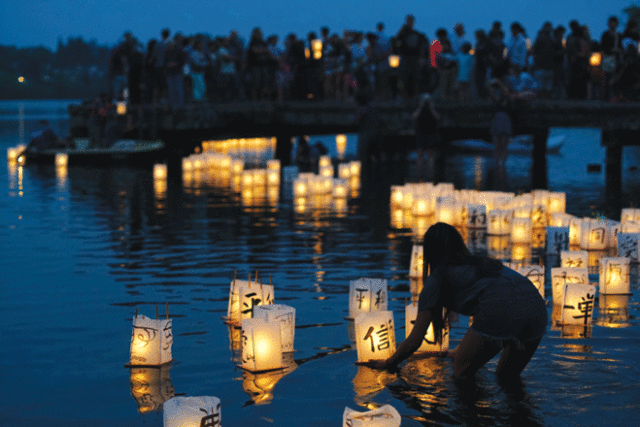by Nick Turner
It’s been 72 years since the United States dropped two atomic bombs on Japan in response to the attack on Pearl Harbor. One was dropped on the city of Hiroshima, the other just three days later on Nagasaki. It remains that no nuclear weapons have ever been used before or after those events. Most estimates say the death toll exceeded 200,000 but the carnage left behind made it impossible for an exact number, and most historians consider that figure to be generous.
Sunday marked the anniversary of that tragic day. In Seattle, each year an event called “From Hiroshima to Hope” is held to commemorate, immortalize and pay tribute to the victims of the atomic bombings along with all victims of war and violence. The evening began with music and performances, a blessing by Brothers Senji Kanaeda and Gilberto Perez, and a speech by keynote speaker Tom Ikeda of the Densho project.
Ikeda spoke of the people he had interviewed for his work, which included Japanese-Americans incarcerated during World War II and “hibakusha,” a Japanese word used to describe those who were in Hiroshima or Nagasaki at the time the bombs were dropped. “These people…they know that life is a journey, and that for them to dwell on the negatives would be detrimental. So they move forward,” Ikeda said.
Next to the stage where Ikeda spoke stood a sculpture by Yukiyo Kawano titled “Little Boy,” a folded scale model of the bomb that was detonated over Hiroshima. There was also a photo exhibit that displayed a series of images taken in the aftermath of the bombings.
Later in the night, as the sun made red by the smoky sky began to dip below the horizon, people made their way to the dock. One by one volunteers lit the candles placed in holders inside the paper lanterns. As more were lit, the words inscribed on each lantern became illuminated. On some were written the Japanese words for hope, love, peace and dream; on others were written the same words in the Punjabi language of India. Once theirs was lit, people carried their lantern to the edge of the water and gently set it afloat on the calm waters of Green Lake. As the night went on, the dying light of the sun was replaced by the warm glow of the lanterns.
This ceremony, the Toro Nagashi, is an adaptation of an ancient Japanese Buddhist ritual. Each lantern represents a soul, and together they are set afloat in the sea so that they may rest in peace. Each year this tradition is carried out in Hiroshima, Nagasaki and cities throughout the world. In Seattle, according to the event’s organizers, the lanterns “have come to represent not only those victims but also those who have died in violent conflict anywhere, and have become symbols of our individual commitment to making a more peaceful world.”
“From Hiroshima to Hope” is held annually in the same location. The event is open to the public.








